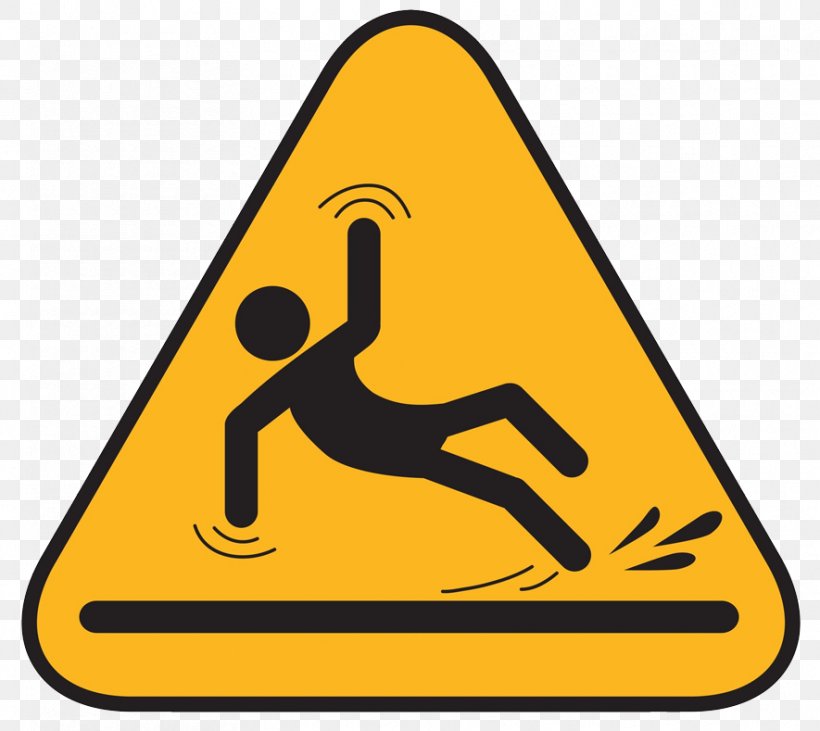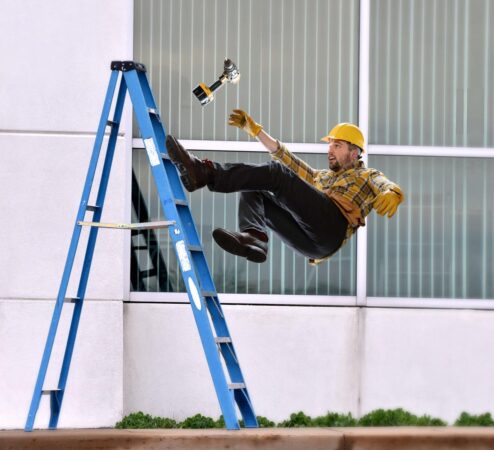
Types of Falling Injuries

Falls can result in a wide range of injuries, depending on the height and surface of the fall, as well as the individual’s age and health. Some of the most common types of falling injuries include:
Fractures
Fractures are broken bones. They can occur anywhere in the body, but are most common in the wrists, ankles, and hips. Fractures can be simple, meaning the bone is broken in two pieces, or complex, meaning the bone is broken into multiple pieces or shattered. Complex fractures can be more difficult to treat and may require surgery.
Sprains
Sprains are injuries to ligaments, the tough bands of tissue that connect bones together. Sprains can range from mild to severe, depending on the severity of the ligament damage. Mild sprains may only cause pain and swelling, while severe sprains can result in instability and difficulty moving the joint.
Head Trauma
Head trauma is any injury to the head. Head trauma can range from mild, such as a concussion, to severe, such as a skull fracture or brain injury. Concussions are caused by a blow to the head that disrupts the normal function of the brain. Symptoms of a concussion can include headache, nausea, vomiting, dizziness, and confusion. Skull fractures are breaks in the skull. They can be caused by a severe blow to the head and can lead to brain damage. Brain injuries are damage to the brain tissue. They can be caused by a severe blow to the head or by a penetrating injury, such as a gunshot wound. Brain injuries can range from mild to severe, and can lead to a variety of disabilities, including cognitive impairment, physical impairments, and emotional problems.
Causes of Falling Accidents
Falling accidents are a major cause of injuries and fatalities, with various factors contributing to their occurrence. Identifying the causes of these accidents is crucial for preventing them and ensuring the safety of individuals.
Negligence plays a significant role in many falling accidents. This includes failure to maintain safe premises, such as slippery surfaces, faulty equipment, and inadequate lighting. Additionally, human factors, such as lack of attention or impaired judgment, can also contribute to falls.
Slippery Surfaces
Slippery surfaces are a common cause of falling accidents, particularly in areas where there is moisture or spills. These surfaces can be found in various locations, including sidewalks, floors, and stairs. Inadequate maintenance or cleaning can increase the risk of slipping and falling.
Faulty Equipment
Defective or malfunctioning equipment can also lead to falling accidents. This includes ladders, scaffolding, and other equipment used for work or recreation. Poor maintenance or improper use of equipment can compromise its stability and increase the risk of falls.
Inadequate Lighting
Insufficient lighting can make it difficult to see potential hazards, increasing the likelihood of falls. This is particularly important in areas where there is poor natural light or during nighttime hours. Proper lighting can help individuals identify obstacles and navigate safely.
Legal Rights of Victims

Victims of falling injuries have several legal rights that protect their interests and allow them to seek compensation for their damages. These rights include the right to file a personal injury lawsuit, the right to seek medical treatment, and the right to lost wages and other damages.
It is important for victims of falling injuries to seek legal representation as soon as possible after their accident. An experienced attorney can help victims understand their rights, navigate the legal process, and maximize their compensation.
Choosing a Falling Injury Lawyer

Selecting a qualified and experienced falling injury lawyer is crucial for maximizing your compensation and ensuring a successful outcome. Consider the following factors:
Track Record and Expertise
Seek an attorney with a proven track record of success in handling falling injury cases. Check their website, online reviews, and state bar association records for information on their case history and specialization.
Communication Skills
Effective communication is essential. Ensure your lawyer is responsive, understands your needs, and keeps you informed throughout the legal process.
Fees and Expenses
Understand the lawyer’s fee structure, including hourly rates, contingency fees, and any upfront costs. Consider the potential return on investment and whether the lawyer’s fees are reasonable.
Personal Fit
Trust and rapport are important. Choose a lawyer you feel comfortable with and who understands your goals. Consider their personality, demeanor, and approach to legal matters.
Additional Considerations
Consider the lawyer’s experience with insurance companies, their understanding of relevant laws, and their availability to handle your case promptly and efficiently.
The Legal Process
Navigating the legal process after a falling injury can be daunting. Understanding the steps involved is crucial for victims seeking compensation and justice.
The process typically begins with filing a claim with the responsible party’s insurance company. This claim should Artikel the details of the accident, injuries sustained, and damages incurred. The insurance company will then investigate the claim and make an offer for settlement.
Negotiating a Settlement
If the insurance company’s offer is unsatisfactory, victims can negotiate a settlement through their attorney. Negotiations involve back-and-forth discussions to reach an agreement that both parties find acceptable.
Going to Trial
If negotiations fail, victims may consider filing a lawsuit and going to trial. This involves presenting evidence and arguing the case before a judge or jury. The outcome of the trial will determine the amount of compensation awarded to the victim.
Compensation for Falling Injuries
Victims of falling injuries may be entitled to compensation for their damages. The types of compensation available can vary depending on the severity of the injury and the specific circumstances of the case.
Compensation may include:
- Medical expenses
- Lost wages
- Pain and suffering
- Emotional distress
- Loss of consortium
The amount of compensation awarded will depend on a number of factors, including:
- The severity of the injury
- The length of time the victim is unable to work
- The victim’s pain and suffering
- The victim’s emotional distress
- The victim’s loss of consortium
It is important to note that compensation for falling injuries is not always guaranteed. In order to be eligible for compensation, the victim must be able to prove that the injury was caused by the negligence of another party.
